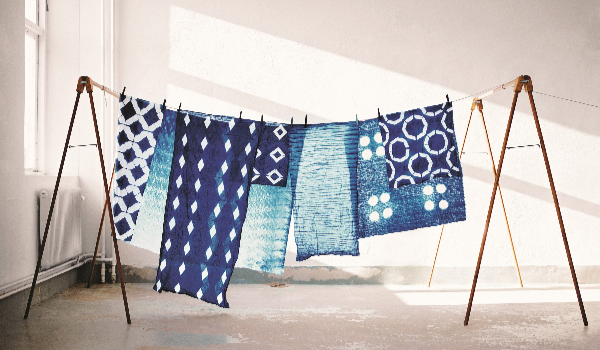
How To Make Itajime Shibori

Itajime is a technique where you fold a piece of fabric and then clamp it between two objects. The area that’s covered will remain undyed in the dyeing process. We sawed a piece of thin wood and drilled holes for wing nuts to make itajime clamps, but woodworking clamps, rubber bands or string work just as well.
The itajime techniques illustrated here involve folding the fabric into a wedge or square. We started with a piece of fabric that measured 40 x 70cm, silk or a light cotton such as lawn give excellent results. Start by rinsing the fabric and folding in half twice so you have a strip measuring 10 x 70cm. Then fold it into either a square or a wedge. Turn the fabric over in between each fold as though you were creating an accordion and not a roll.

The way you fold the fabric will affect the pattern so it is a good idea to try several different folding techniques to find the one you like the best. Once folded attach one or several clamps to create the patterns. The image to the right shows illustrations of itajime techniques, in which a clamp is placed on the folded fabric before it is dyed. The illustration below shows the resulting patterns.
Now you are ready to dye: see the indigo dye bath recipe at www.selvedge.org.
You can also create patterns with different indigo tones by dyeing your itajime once then moving the clamp to another position before dyeing it again. If dyeing with indigo, after the first dip, leave the fabric to oxidize for 15 minutes with the clamp in place before moving it and dipping the fabric again.
Extracted from Indigo by Kerstin Neumüller & Douglas Luhanko. Images by Fredrik Ottosson. Readers can enjoy their copy of Indigo (RRP £15.99) for £12 with free UK p&p. T: 0844 576 8122 & quote CH2022 Fredrik

1 comment
WONDERFUL ,Thank you